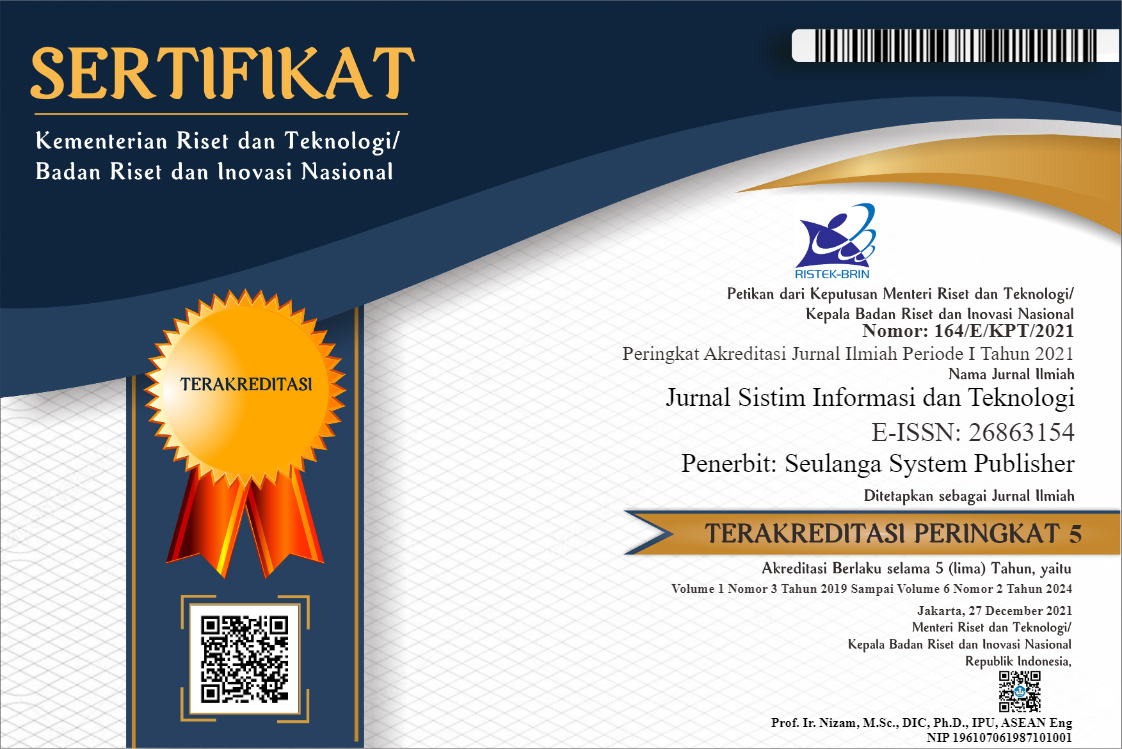The Implementation of Data Mining Method Using K-Means Algorithm to Analyze Study Interest of High School Students
DOI:
https://doi.org/10.37034/jsisfotek.v5i1.209Keywords:
Students, Data Mining, Cluster, K-Means, AlgorithmAbstract
At present, the school is experiencing difficulties processing the results of student academic achievement for the specialization process for high school students. The currently running student interest process still uses a manual system by calculating the subject value of each student and then grouping the results of the calculation of each student's value into science or social studies interest groups in accordance with the requirements imposed by the school. For that, we need a solution that can overcome these difficulties. The author develops the application using the Rapid Application Development (RAD) method, which consists of the requirements planning phase, the design phase, the construction phase, and the implementation phase. At the construction stage, the K-Means algorithm is implemented in data mining technology to classify student academic achievement results into science and social studies interest groups. The results of making this application are intended for the school, especially the homeroom teacher, so that it can be an alternative solution or advice in making decisions for student specialization.
References
Departemen Pendidikan Nasional. (2008). Technical Instructions for Student Learning Outcomes Reports (LHBPD). Jakarta: Dirjen Mandikdasmen.
Astuti, E. D., Tannady, H., Lahiya, A., Supriatna, D., & Handayani, E. S. (2023). The Analysis of Relationship Between Quality of Graduates and Education Financing Management in Private Islamic School. Journal on Education, 5(3), 7715-7720.
Ediyanto., Mara, M. N., & Satyahadewi, N. (2013). Characteristic Classification Using the K-Means Cluster Analysis Method. Jurnal: Universitas Tanjungpura (UNTAN).
Nurprihatin, F., Tannady, H., Lusiani, M., Karo-Karo, G., & Renatha, R. (2017). Algoritma K-Means Clustering untuk Menentukan Lokasi Pusat Distribusi Ritel dengan Mempertimbangkan Jumlah Permintaan. Penelitian dan Aplikasi Sistem dan Teknik Industri, 11(1), 32-44.
Giyanto, H. (2008). Application of the K-Means Clustering algorithm, K-Medoid, Gath Geva. Tesis Tidak Terpublikasi. Yogyakarta: Universitas Gajah Mada.
Jananto, A. (2010). Predicting Student Performance Using Data Mining Techniques (Case study of UNISBANK student academic data). Tesis Tidak Terpublikasi. Yogyakarta: Universitas Gajah Mada
Kusrini., & Emha, T. L. (2009). Data Mining Algorithm. Yogyakarta: CV. Andi Offset.
Nugroho, B. S., Anggreni, M. A., Afnanda, M., Arta, D. N. C., & Tannady, H. (2023). The Role of Academic Fraud as an Intervening Variable in Relationship of Determinant Factors Student Ethical Attitude. Journal on Education, 5(3), 9584-9593.
Parinussa, J. D., Taryana, T., Ningtyas, A. A., Rachman, R. S., & Tannady, H. (2023). Developing Student Emotional Intelligence by Involving the Active Role of Teacher. Journal on Education, 5(3), 8528-8533.
Pressman, R. S. (2002). Software engineering. Yogyakarta : Andi
Downloads
Published
How to Cite
Issue
Section
License
Copyright (c) 2022 Jurnal Sistim Informasi dan Teknologi

This work is licensed under a Creative Commons Attribution 4.0 International License.









